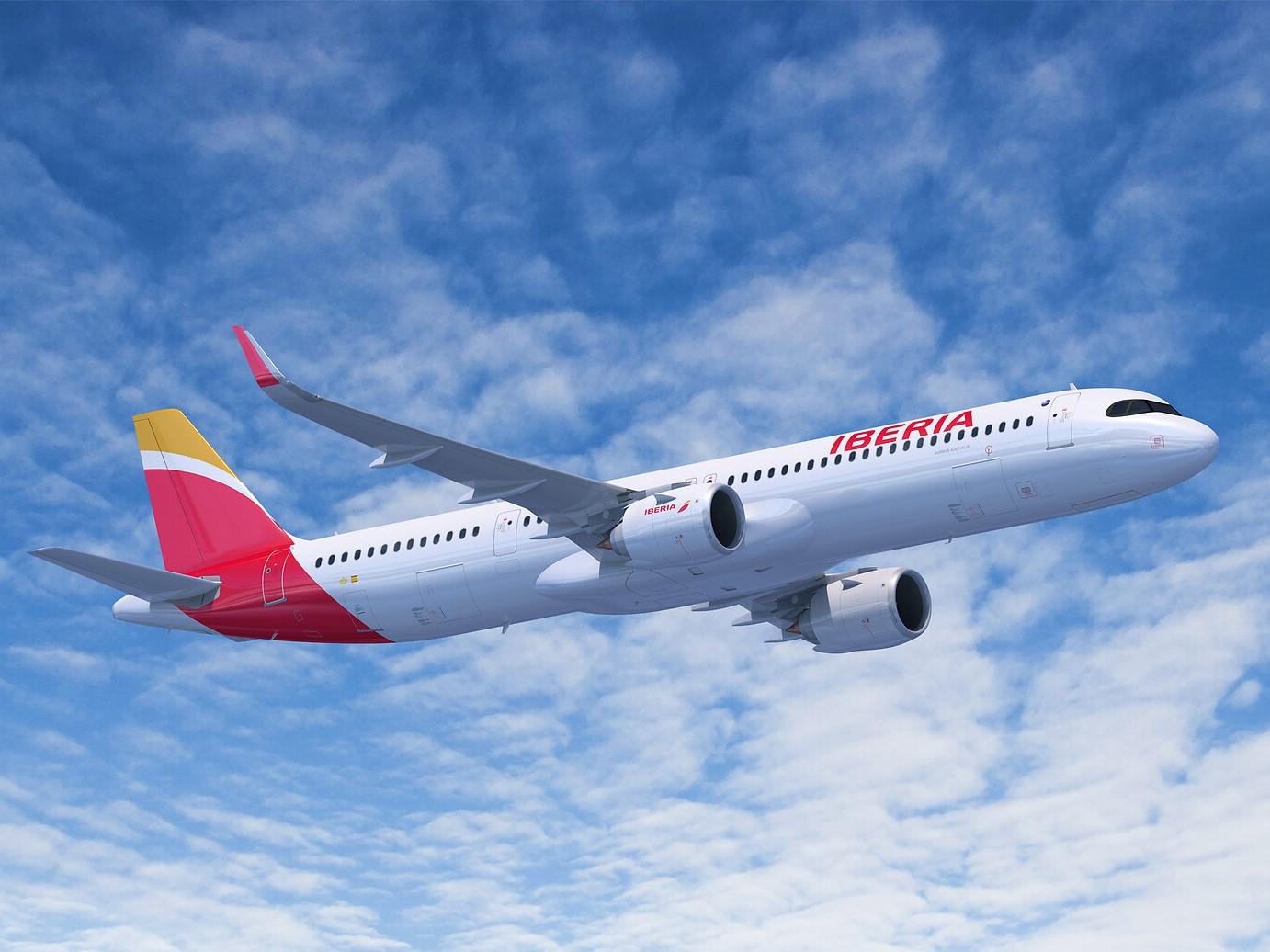
Iberia Airbus A321XLR.
ISTANBUL–Iberia sees the Airbus A321XLRs that are due to arrive in its fleet from the around the start of 2025 as tools to drive further growth in its North American network, where demand is already strong and capacity growing.
“We are looking to explore new destinations—for that purpose the A321XLR is going to be a great aircraft,” Maria Jesús López Solas, commercial, network, development and alliances director at the Spanish airline, told Aviation Daily on the sidelines of the IATA AGM in Istanbul.
The airline, part of the International Airlines Group (IAG), has eight A321XLRs on order and expects to receive them around the end of 2024 or the beginning of 2025.
“It will help us to explore new destinations where maybe the demand is thinner, but we can try and see if it works and then deploy a larger aircraft if it works,” López Solas said. “We will be exploring a number of new destinations when we have that aircraft.”
It could also be used to increase frequencies on popular existing destinations.
“I think it’s better for the customer to have a daily frequency than three times a week in a larger aircraft,” López Solas said. “We have eight on order but of course we will review when we see the performance of the aircraft.”
Iberia is already focusing on increasing frequencies to destinations in its US network, including Dallas, Washington and San Francisco, flying across the summer, for example, instead of just over the peak months.
“We are growing our number of seats significantly. For us, the US is very relevant. We are flying 15% more than what we were flying in 2019,” López Solas said.
Demand in Latin America is also looking very good, she said, with three daily frequencies to Mexico and planned growth to other destinations, including Santiago and Colombia.
Closer to home, López Solas said Iberia is well prepared for expected strong demand this summer. “I think we are very ready for the summer.”
Contrary to some other airlines, López Solas said Iberia had been working well with Madrid Airport, which she said “has been excellent. Right now the airport is working perfectly.”
Iberia is seeing strong demand across its network.
“Long-haul is very strong both from Latin America and North America, inbound and outbound,” she said. “Many people that couldn’t travel in previous years are now traveling, so North America is booming, Latin America is booming, our islands in the region are booming, and even Europe, which has been a little bit delayed in terms of recovery of point-to-point demand, is also recovering. Of course we have the noise about potential recession around the corner, but we are not seeing any signs of that.”
The airline is offering 13 new destinations in Europe this summer.
On the fleet side Iberia is also continuing with the integration of the new generation Airbus A350s it has on order, with two more set to join the fleet this year and a further two in 2024. The new A350s, of which Iberia is set to receive eight for a total of 22 A350s it will have in its fleet by the end of 2024, have improved cabins, including a new business class seat and improved premium economy.
Iberia put its first new A350 into service on a route to Buenos Aires and also to make use of the aircraft on “hot and high” airports, including Bogotà and Quito.





